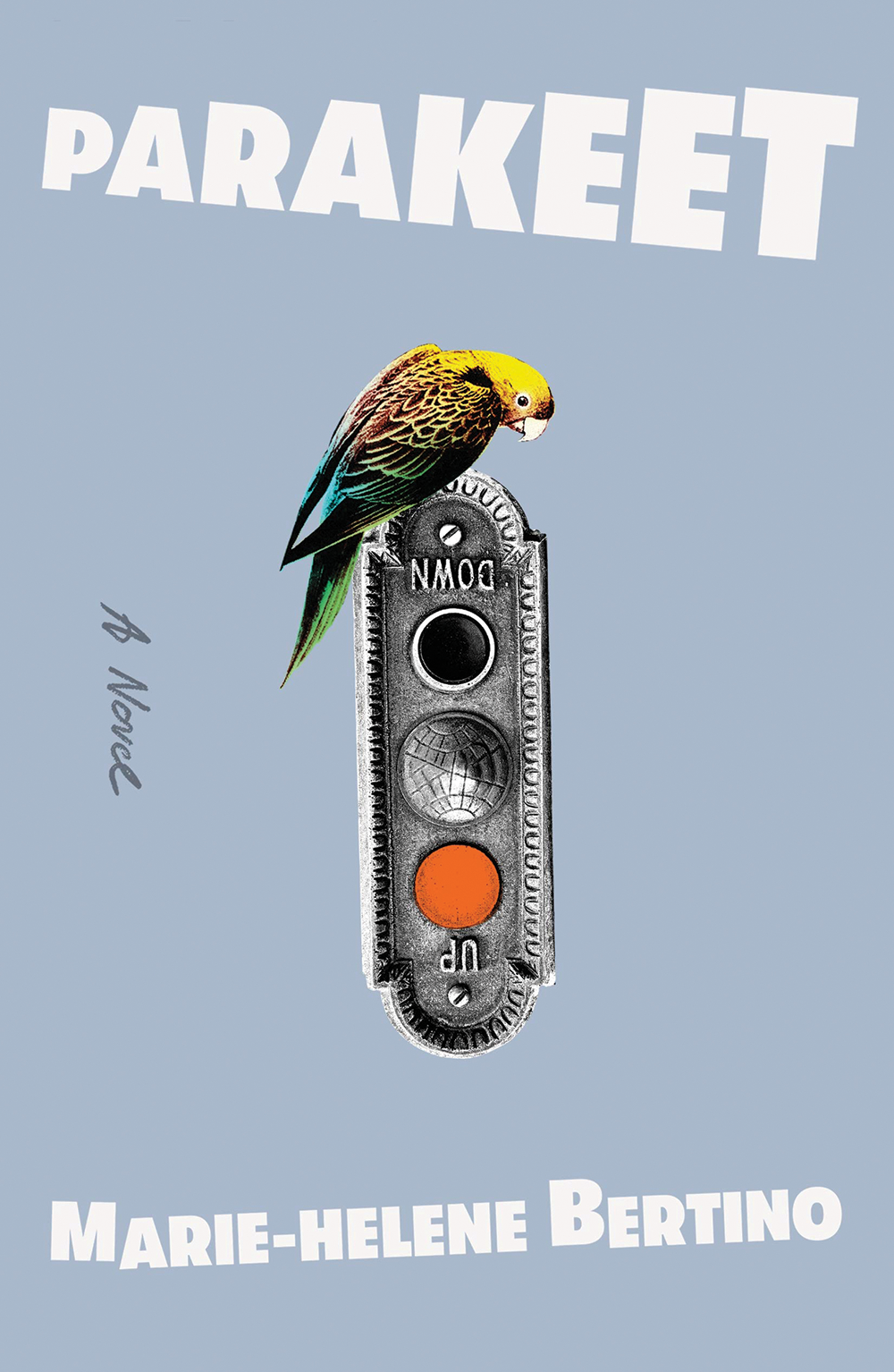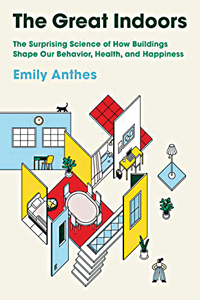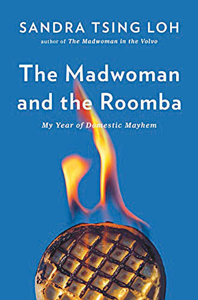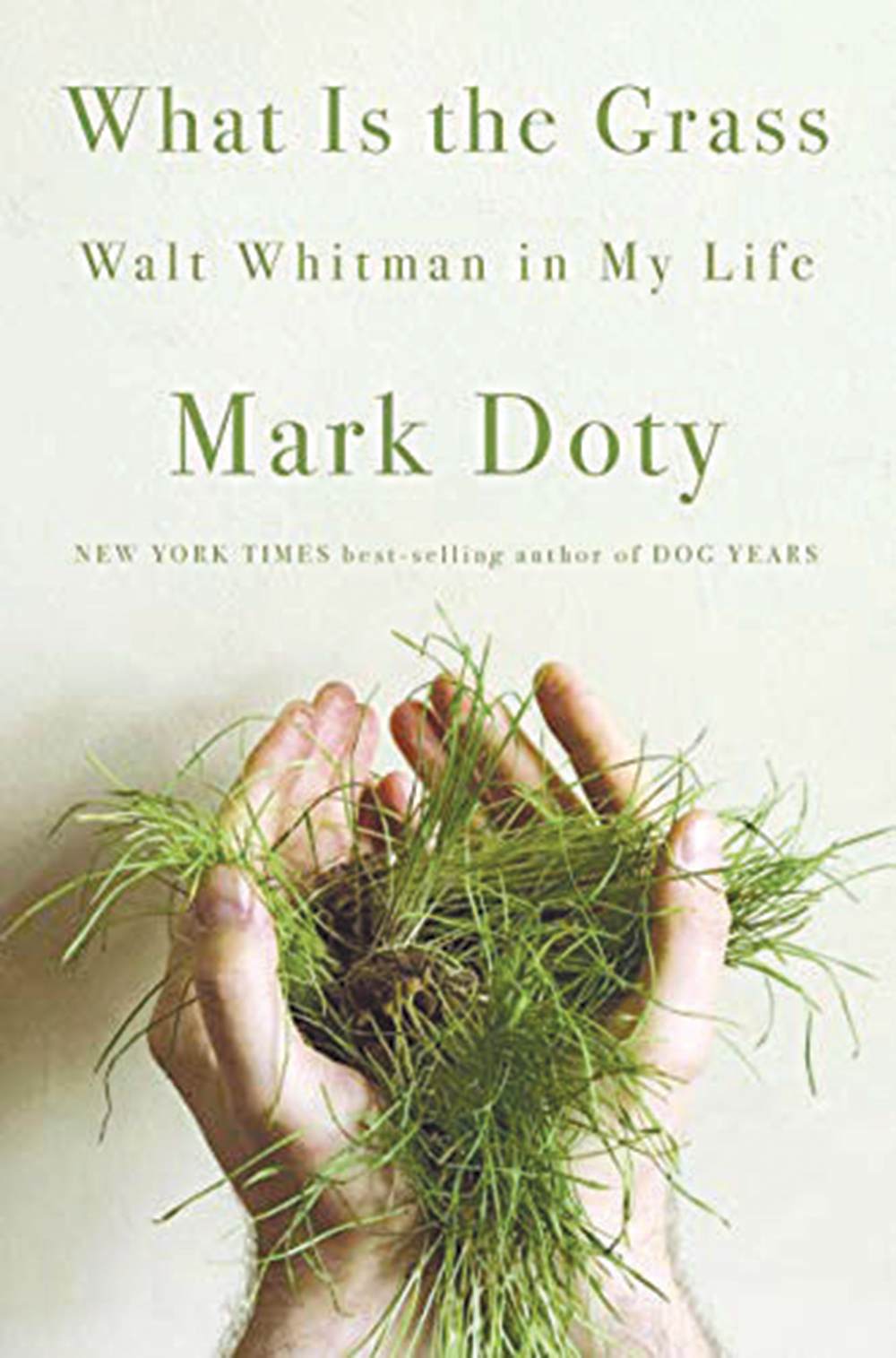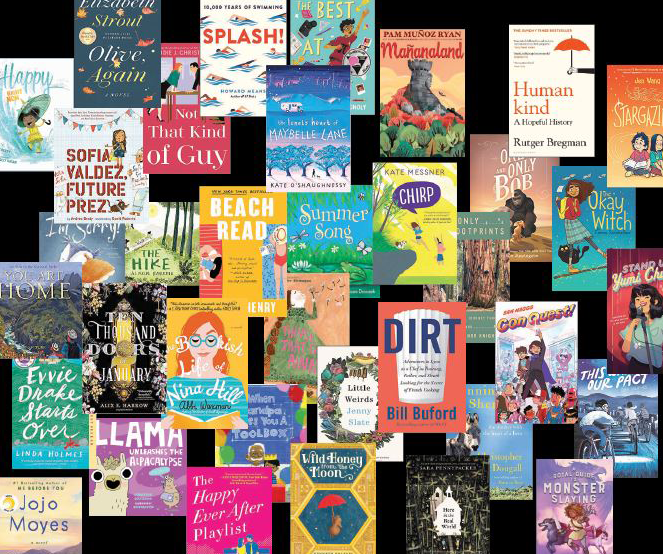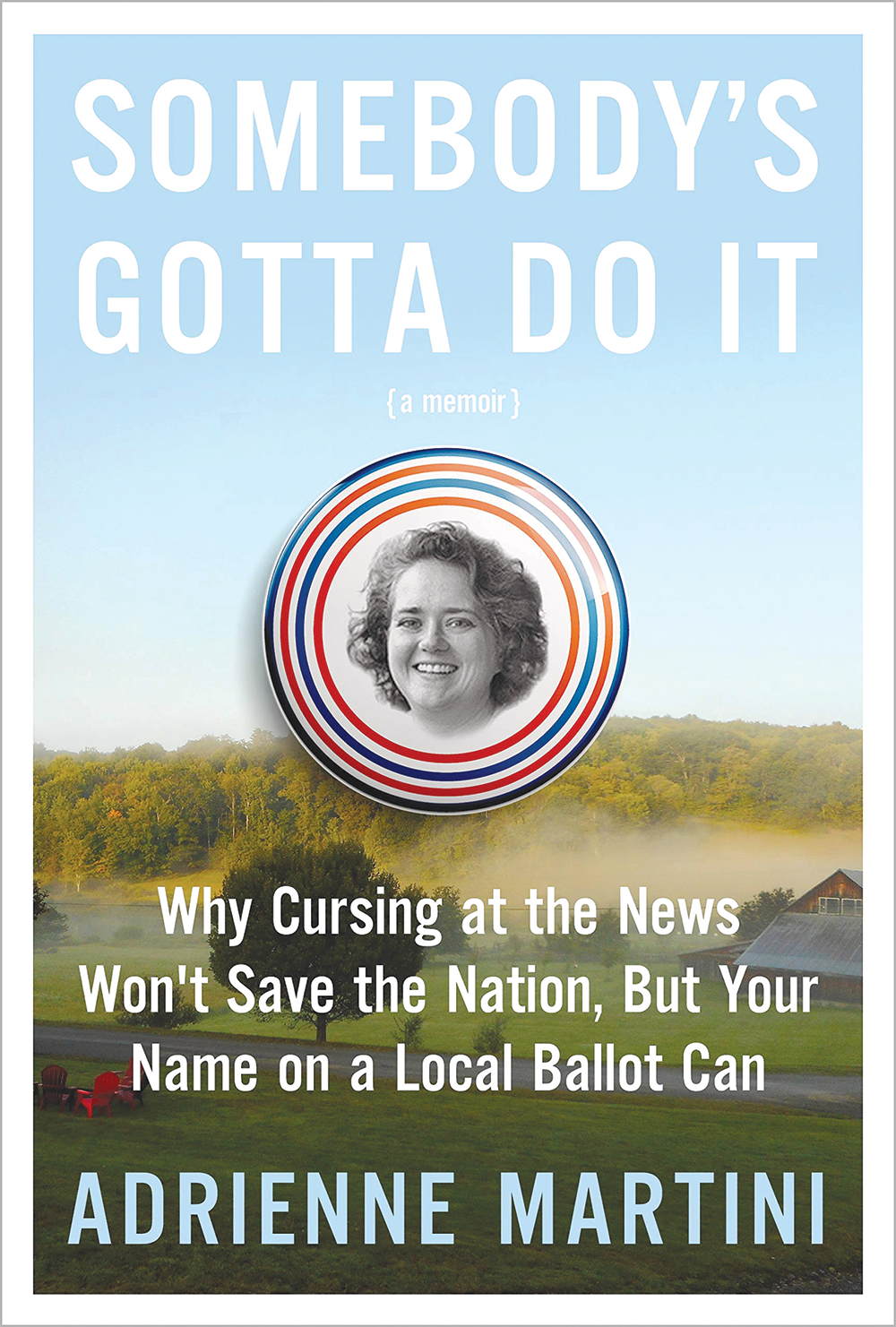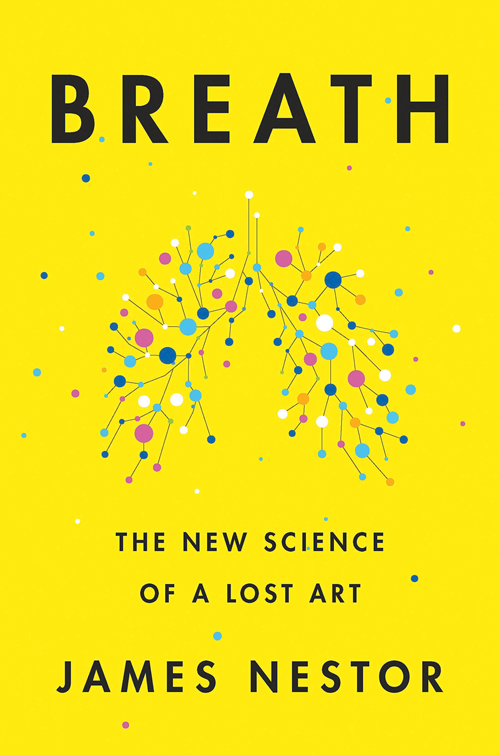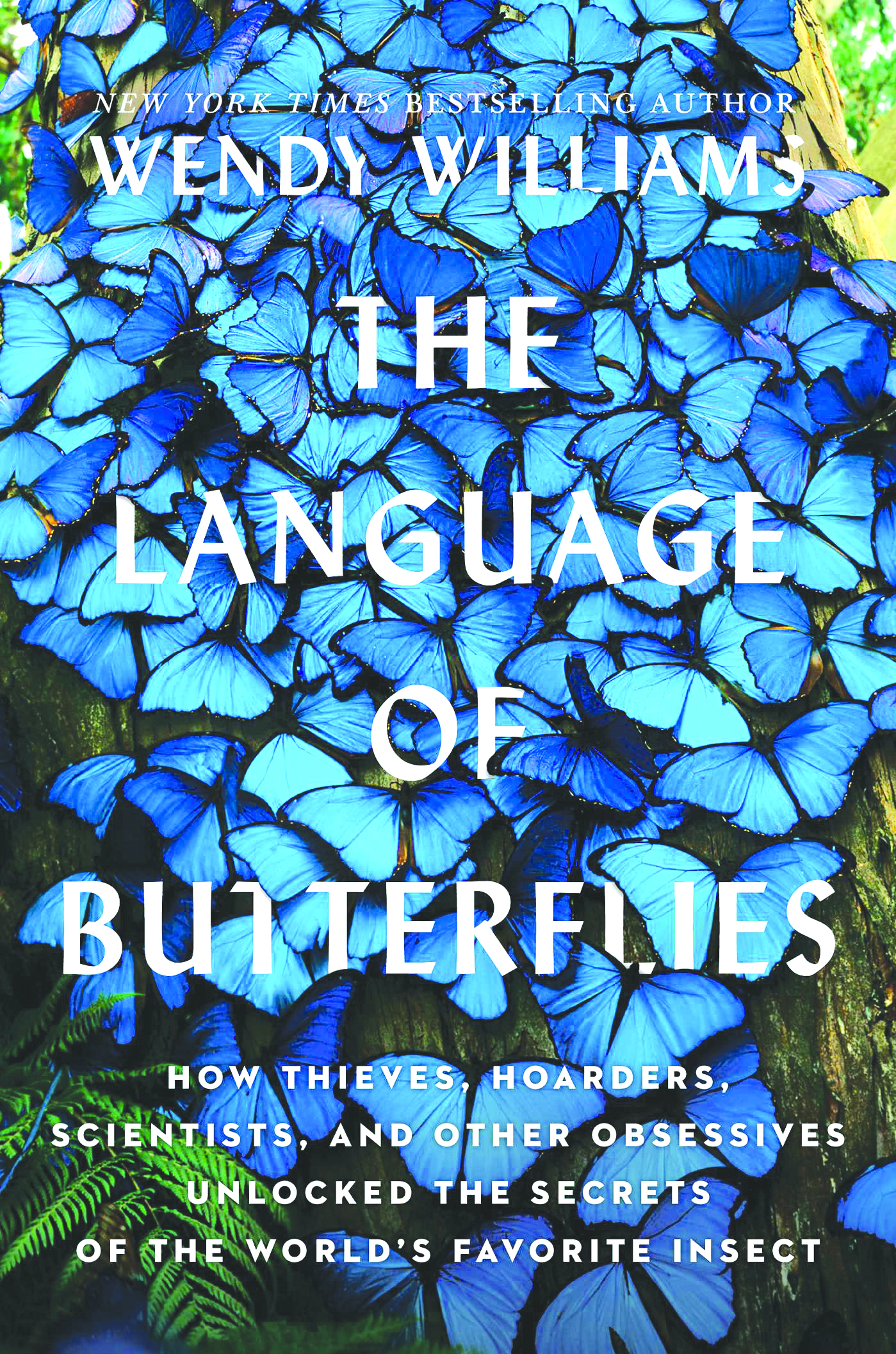Laughs, adventure and more for your summer reading list
For this year’s summer reading guide, we asked local library staff and indie booksellers to recommend some of their favorite fun or inspiring reads published since June 2019, and they came up with more than 50, including memoirs, offbeat graphic novels, self-improvement guides, magical tales, page-turning romances and more.
Fiction
Contemporary
Olive, Again by Elizabeth Strout
Published: October 2019
Plot: Meet Olive, a cantankerous but lovable old lady.
Recommended by: Dianne Hathaway, Director at Goffstown Public Library. “Olive is funny, speaks her mind and may remind you of your own old lady family member.”
The Summer Deal by Jill Shalvis
Published: June 2020
Plot: Three friends reconnect over the summer and must discover forgiveness and trust.
Recommended by: Natalie Ducharme, Interim Director at Kelley Library in Salem. “A fun mix of humor, romance and family.”
Fantasy
The City We Became by N.K. Jemisin
Published: March 2020
Plot: Five of the Earth’s greatest cities are alive, and five people unexpectedly become the living embodiments of New York City’s five boroughs.
Recommended by: Yvette Couser, Library Director at Merrimack Public Library. “A tale of magic, culture, fantasy and adventure.”
The House in the Cerulean Sea by T.J. Klune
Published: March 2020
Plot: Linus Baker, a case worker for the government agency in charge of the welfare of magical youth, is sent to inspect a classified orphanage on a beautiful hidden island.
Recommended by: Angela Sylvia, Technical Services at Bedford Public Library; Julie Andrews, Reference Librarian at Nashua Public Library; and Dianne Hathaway, Director at Goffstown Public Library. “A character-driven story about kindness, finding a place to belong, and fighting harder than one knew they could in order to keep it,” Sylvia said. “A funny, gentle, heart-warming story about love and found family,” Andrews said.
The Ten Thousand Doors of January by Alix E. Harrow
Published: September 2019
Plot: A young woman discovers a world of magic within a mysterious book.
Recommended by: Michael Herrmann, owner of Gibson’s Bookstore (45 S. Main St., Concord, 224-0562, gibsonsbookstore.com). “Achingly beautiful.”
Historical
The Giver of Stars by Jojo Moyes
Published: October 2019
Plot: A group of volunteer traveling librarians finds new strength and independence as they deliver books to people in rural Tennessee.
Recommended by: Katie Spofford, Young Adult and Reference Librarian at Wadleigh Memorial Library in Milford. “This inspiring tale touches lightly on issues women faced in the 1930s and includes a bookish romance.”
Rodham by Curtis Sittenfeld
Published: May 2020
Plot: What if Hillary Clinton never married Bill? This alternate history imagines that, after several years of dating, Hillary decides to go her own way instead of tying her fate to Bill’s.
Recommended by: Caitlin Loving, Head of Circulation at Bedford Public Library. “Sittenfeld perfectly captures what I imagine Hillary’s inner voice sounds like and creates a completely compelling narrative. A perfect beach read for political junkies or anyone who wants a juicier version of HRC’s biography.”
We Ride Upon Sticks by Quan Barry
Published: March 2020
Plot: The 1989 Danvers Field Hockey team will do anything to win the championship, even if that means summoning dark powers through an Emilio Estevez spiral notebook.
Recommended by: David Gain, bookseller at The Toadstool Bookshop in Nashua (375 Amherst St., toadbooks.com, 673-1734), and Caitlin Loving, Head of Circulation at Bedford Public Library. “This novel is hilarious and clever, but also heartwarming. Come for the comic relief and late ’80s references, stay for the true-to-life characters, female friendships and fist-pumping girl-power feels,” Loving said.
Romance
Beach Read by Emily Henry
Published: May 2020
Plot: A romance writer and a literary fiction writer spend the summer next door to each other and trade genres.
Recommended by: Tom Holbrook, manager at RiverRun Bookstore (32 Daniel St., Portsmouth, 431-2100, riverrunbookstore.com). “This is pretty light fare, but with a quick wit and some unexpected perceptions.”
The Bookish Life of Nina Hill by Abbi Waxman
Published: July 2019
Plot: At the beginning, you might think Nina’s life is lonely, but by the end, you’ll see the richness of her new family and friends.
Recommended by: Amy Lapointe, Library Director at Amherst Town Library. “The quirky, sweet, introverted heroine of this romantic comedy will absolutely charm you.”
Evvie Drake Starts Over by Linda Holmes
Published: June 2019
Plot: A widow and a washed-up professional athlete find themselves and each other.
Recommended by: Amy Lapointe, Library Director at Amherst Town Library. “Warm and uplifting … this book strikes just the right balance between romantic, humorous, quirky and sweet.”
The Happy Ever After Playlist by Abby Jimenez
Published: April 2020
Plot: Sloan and Jason have intense chemistry, exchange flirty texts and share a great sense of humor.
Recommended by: Amy Lapointe, Library Director at Amherst Town Library. “A fun beach read that might keep you up all night trying to see how the couple can get past their different situations.”
Not That Kind of Guy by Andie J. Christopher
Published: April 2020
Plot: A hard-working lawyer struggling with student loan debt and a failed relationship meets a wealthy younger man who understands her struggles without judgment.
Recommended by: Alexa Moore, Circulation & Reader Services Librarian at Amherst Town Library. “A fun, lighthearted romance with a realistic look at what a millennial dream romantic encounter would include.”
Nonfiction
Memoir
Dirt: Adventures in Lyon as a Chef in Training, Father, and Sleuth Looking for the Secret of French Cooking by Bill Buford
Published: May 2020
Plot: Buford’s memoir follows his trip with family to spend time in France trying to master French cooking.
Recommended by: Tom Holbrook, manager at RiverRun Bookstore.
Leave Only Footprints: My Acadia-to-Zion Journey Through Every National Park by Conor Knighton
Published: April 2020
Plot: The author chronicles the year he spent visiting every national park.
Recommended by: Natalie Ducharme, interim director at Kelley Library in Salem. “[Knighton] brings the parks to life with humor and charisma.”
Little Weirds by Jenny Slate
Published: November 2019
Plot: A collection of essays from comedian and actress Jenny Slate about the little things that make us who we are.
Recommended by: David Gain, bookseller at The Toadstool Bookshop in Nashua. “Both profoundly deep and laugh-out-loud ridiculous, Slate shows us about our eccentricities and how they bring us all together.”
Running with Sherman: The Donkey with the Heart of a Hero by Christopher McDougall
Published: October 2019
Plot: The author tells his story about adopting a neglected donkey and giving it a new life and purpose as a burro racer.
Recommended by: Sarah St. Martin, Head of Technical Services at Manchester City Library. “I enjoyed how this story transcends cultures and generations. The author depicted otherwise ordinary people as charismatic characters drawn together to achieve a unified goal.”
Sigh, Gone: A Misfit’s Memoir of Great Books, Punk Rock, and the Fight to Fit In by Phuc Tran
Published: April 2020
Plot: Tran writes about growing up as an immigrant in a predominantly white Midwest town.
Recommended by: Jasmin Brooks, assistant manager at Bookery (844 Elm St., Manchester, 836-6600, bookerymht.com). “Hilarious, poignant and inspiring, this book reads like a good work of fiction with real-world implications.”
Wow, No Thank You.: Essays by Samantha Irby
Published: March 2020
Plot: Upon turning 40 years old, Irby writes about aging, marriage and settling down in a small town.
Recommended by: Jasmin Brooks at Bookery and Katrina Feraco, frontline bookseller at The Toadstool Bookshop in Keene (12 Emerald St., 352-8815; toadbooks.com). “This collection of essays will help you fight the Covid blues by reminding you that you never really wanted to leave the house anyway. Irby uses self-deprecation to help us see that we are all hilariously imperfect beings,” Brooks said. “This collection of essays is heartfelt, funny and irreverent. Showcasing Irby’s charismatic voice and pitch-perfect storytelling, this book is perfect for a little bit of escapism and a lot of laughing,” Feraco said.
You & Me: Reflections on Becoming Your Dad by Dan Szczesny
Published: June 2020
Plot: Szczesny reflects on fatherhood and the passage of time as his young daughter grows up.
Recommended by: Yvette Couser, Library Director at Merrimack Public Library.
Select Topics
Beneath the Tamarind Tree: A Story of Courage, Family, and the Lost Schoolgirls of Boko Haram by Isha Sesay
Published: July 2019
Plot: A story about the faith and courage of the Nigerian school girls who were abducted by Boko Harum.
Recommended by: Prudence Wells, bookseller at The Toadstool Bookshop in Nashua. “This wonderful story… highlights the strength of the girls, families and communities.”
Humankind: A Hopeful History by Rutger Bregman
Published: June 2020
Plot: An exploration of the idea that humans are intrinsically kind and cooperative, despite the nightly news.
Recommended by: Tom Holbrook, manager at RiverRun Bookstore. “Obviously, a fresh, original take on our global situation.”
Splash!: 10,000 Years of Swimming by Howard Means
Published: June 2020
Plot: A look at the cultural and social history of swimming, from Egypt, ancient Greece and Rome and the Middle Ages to today’s Olympics.
Recommended by: Natalie Ducharme, Interim Director at Kelley Library in Salem. “A fun, readable book that helps us understand why water calls to us humans and why we can’t resist splashing in it.”
You Are Home: An Ode to the National Parks by Evan Turk
Published: June 2019
Plot: A journey across the country discovering the gifts and treasures hidden in our national parks.
Recommended by: Heidi Deacon, Library Director at Smyth Public Library in Candia. “For those who may not be able to visit any parks in person this summer, here is a beautiful way to discover them through the animals who inhabit them via lovely illustrations.”
Self-Help
How to Be Fine: What We Learned from Living by the Rules of 50 Self-Help Books by Jolenta Greenberg and Kristen Meinzer
Published: March 2020
Plot: The authors share their findings after testing out a variety of self-help methods to see what works and what doesn’t.
Recommended by: Sarah St. Martin, Head of Technical Services at Manchester City Library. “I liked being able to quickly scan multiple strategies rather than deep diving into one particular method. The authors use an entertaining and light style, even when presenting serious scenarios.”
Weird: The Power of Being an Outsider in an Insider World by Olga Khazan
Published: April 2020
Plot: Khazan discusses the sociology, psychology and power of being “weird,” and how the traits that make you feel like an outsider can actually help you stand out in the world and reach your greatest potential.
Recommended by: Jasmin Brooks, assistant manager at Bookery in Manchester. “Khazan’s writing is well-researched and very entertaining. … I learned a better way to celebrate and embrace my weirdness.”
Children’s
Picture Books
Happy Right Now by Julie Berry
Published: October 2019
Plot: A young girl shows us how to find gratitude and joy amidst the not-so-great moments of our lives.
Recommended by: Heidi Deacon, Library Director at Smyth Public Library in Candia. “What a beautiful way to share with children that we all have things that try to rob our happiness … [and how] to march right past them into living … in thankfulness every moment.”
The Hike by Alison Farrell
Published: October 2019
Plot: Three little friends and one eager pet go hiking and find a trove of delights along the way.
Recommended by: Heidi Deacon, Library Director at Smyth Public Library in Candia. “This darling tale shows the spirit of adventure outdoors and what surprises are around each corner.”
I’m Sorry! by Barry Timms, illustrated by Sean Julian
Published: March 2020
Plot: Two best friends, an owl and a squirrel, must learn how to live together in a shared space, despite their differences.
Recommended by: Heidi Deacon, Library Director at Smyth Public Library in Candia. “As these two sweet creatures discover, their respect and love for each other win, and they realize that compromise is better than they imagined it could be.”
Llama Unleashes the Alpacalypse by Jonathan Stutzman, illustrated by Heather Fox
Published: May 2020
Plot: As a llama goes through his day and prepares his many meals, chaos ensues.
Recommended by: Betsy Vecchi, Head of Children’s Services at Pelham Public Library. “It is very funny for both grownups and kids, and we all need some humor these days.”
Sofia Valdez, Future Prez by Andrea Beaty, illustrated by David Roberts
Published: November 2019
Plot: A little girl named Sofia decides to do something about the trash heap in her town, so she goes to City Hall to demand change.
Recommended by: Daniele Guest, Youth Librarian at Kimball Library in Atkinson. “A clever, well-written rhyme scheme and cute illustrations … [and a message] of empowerment for kids, [which] feels especially valuable today.”
Summer Song by Kevin Henkes, illustrated by Laura Dronzek
Published: April 2020
Plot: A book about the magic of summer.
Recommended by: Katharine Nevins, owner of MainStreet BookEnds (16 E. Main St., Warner, 456-2700, mainstreetbookends.com). “The perfect read-aloud book for bedtime and to snuggle with an amazed child.”
Things That Go Away by Beatrice Alemagna
Published: March 2020
Plot: This book shows kids that all things — good and bad — will eventually go away, except for a parent’s love.
Recommended by: Patty Falconer, Children’s Librarian at Dover Public Library. “A very timely book with an important lesson for everyone to learn.”
When Grandpa Gives You a Toolbox by Jamie L.B. Deenihan, illustrated by Lorraine Rocha
Published: March 2020
Plot: A boy is disappointed with his grandfather’s gift until he learns that he can use it to build exactly what he wanted with his own two hands, with a little help from his grandfather.
Recommended by: Yvette Couser, Library Director at Merrimack Public Library. “A clever story that celebrates kindness, hard work and community.”
Wild Honey from the Moon by Kenneth Kraegel
Published: November 2019
Plot: A mother shrew goes to the moon to find the medicine that will heal her child.
Recommended by: Nancy Sheridan, Children’s Services Librarian at Colby Memorial Library in Danville. “Beautifully illustrated with intricate details, this book is a comforting adventure … that shows that there are no limits to a mother’s love.”
Middle Grade
Contemporary Fiction
The Best at It by Maulik Pancholy
Published: October 2019
Plot: Rahul Kapoor is on a search to be the best at something, and it has to be cool.
Recommended by: Ji-Eun Alice Ahn at Water Street Bookstore (125 Water St., Exeter, 778-9731, waterstreetbooks.com). “[It’s] about following your instincts, [being] who you are without fear and allowing yourself the room to breathe if something gets to be too much.”
Chirp by Kate Messner
Published: February 2020
Plot: Twelve-year-old Mia moves to Vermont and spends her summer making new friends, helping her grandmother with her cricket farm, solving a mystery and finding the courage to speak up about a past trauma.
Recommended by: Patty Falconer, children’s librarian at Dover Public Library. “This book deals with a sensitive subject in a very accessible way for young children, and it is wrapped up in a mystery.”
Con Quest! by Sam Maggs
Published: June 2020
Plot: Two friends attend the most popular comic con in the world and set out to win The Quest, a giant scavenger hunt that requires participants to complete odd and bizarre tasks, so they can meet one of their favorite celebrities.
Recommended by: Alexa Moore, Circulation & Reader Services Librarian at Amherst Town Library. “This is a fun, fast-moving story that makes you really want to dive into the world of fandoms. My favorite part [is] trying to identify all the fandoms represented throughout this book and chuckling at the cleverness.”
Here in the Real World by Sara Pennypacker
Published: February 2020
Plot: Ware prefers to spend his time alone, dreaming of other worlds, but when his parents sign him up to spend the summer at the rec center against his will, he must learn how to find his place in the real world.
Recommended by: Heather Weirich Roy, children’s book buyer at Gibson’s Bookstore. “This is a sweet book for all the introverts and kids that see the world in a different way.”
The Lonely Heart of Maybelle Lane by Kate O’Shaughnessy
Published: March 2020
Plot: Maybelle has never met her father. When she learns he is judging a singing contest in Nashville, she becomes determined to overcome her stage fright and embarks on a road trip to Louisiana to sing in the contest.
Recommended by: Patty Falconer, children’s librarian at Dover Public Library. “I’m a sucker for a road trip book.”
Mañanaland by Pam Muñoz Ryan
Published: March 2020
Plot: A young boy, seeking answers about his missing mother, finds himself on a perilous journey to help someone in danger that will test his strength, courage and determination.
Recommended by: Betsy Covert, children’s book buyer at The Toadstool Bookshop in Keene. “A beautiful tale, lightly brushed with magic, that speaks to the heart and reverberates with issues faced by contemporary society.”
The One and Only Bob by Katherine Applegate
Published: May 2020
Plot: Three zoo animals discover the meaning of friendship and family as they set out on a dangerous journey after their zoo is hit by a hurricane.
Recommended by: Heather Weirich Roy, children’s book buyer at Gibson’s Bookstore in Concord.
Fantasy
A Royal Guide to Monster Slaying by Kelley Armstrong, illustrated by Xavière Daumarie
Published: August 2019
Plot: Royal twins — one destined to be the ruler of her kingdom, and the other a Royal Monster Slayer — long to switch roles. When a family tragedy forces them into battle with both humans and monsters, the twins must work together to save their kingdom.
Recommended by: Nancy Sheridan, children’s services librarian at Colby Memorial Library in Danville. “Not only is this rollicking adventure full of humor, nonstop action and plenty of monsters, but it turns traditional roles upside down.”
Graphic Novel
Cub by Cynthia L. Copeland
Published: January 2020
Plot: An aspiring journalist apprentices at her local newspaper while balancing family, friends and romantic interests during her middle school years in the 1970s.
Recommended by: Katrina Feraco, frontline bookseller at The Toadstool Bookshop in Keene. “A charming and relatable read [that’s] perfect for middle grade readers and those who enjoy graphic novels.”
The Okay Witch by Emma Steinkellner
Published: September 2019
Plot: The daughter of a witch starts to develop special powers of her own and must learn how to navigate the world of magic.
Recommended by: Daniele Guest, youth librarian at Kimball Library in Atkinson. “The theme of the book … [is] valuing your roots, knowing your history and using that knowledge to choose how to move forward.”
Stand Up, Yumi Chung! by Jessica Kim
Published: March 2020
Plot: Eleven-year-old Yumi, an aspiring comedian, struggles with stage fright, a moral dilemma and pressure from her parents to excel academically and help out at their family restaurant.
Recommended by: Azra Palo, Head of Youth Services at Nesmith Library in Windham, and Betsy Covert, children’s book buyer at The Toadstool Bookshop in Keene. “A fun relatable book just in time for summer,” Palo said. “Full of well-rounded characters and tons of humor,” Covert said.
Stargazing by Jen Wang
Published: September 2019
Plot: A girl, who has visions of celestial beings telling her she belongs among the stars, develops an unlikely friendship with her new next-door neighbor.
Recommended by: Angela Sylvia, technical services staff at Bedford Public Library. “Wang’s cartoony art gives vibrant life to a middle school tale of friendship.”
This Was Our Pact by Ryan Andrews
Published: June 2019
Plot: Ben wants to fit in, but social outcast Nathaniel just won’t leave him alone. When the two of them make a pact to find out where their floating lanterns go every year after the equinox festival, they’ll have to work together to make it back home.
Recommended by: Rachel Stover, office assistant at Manchester City Library. “Full of charming illustrations and a quiet wonder reminiscent of works by Studio Ghibli. A great pick-me-up for fans of magical realism.”
Young Adult
Contemporary Fiction
Paul, Big, and Small by David Glen Robb
Published: October 2019
Plot: Three high school misfits find solace in rock climbing and learn how to face their bullies.
Recommended by: Katie Spofford, Young Adult and Reference Librarian at Wadleigh Memorial Library. “A heartwarming story of friendship and finding advantages in the disadvantages.”
Tweet Cute by Emma Lord
Published: January 2020
Plot: Two high school students at a highly competitive private school in New York City try to navigate the pressures of school while also helping their respective family businesses after a Twitter feud begins between the two competing businesses.
Recommended by: Alexa Moore, Circulation & Reader Services Librarian at Amherst Town Library. “This adorable romance accurately portrays the pressure students feel in high school and the difficulty they have balancing school, work, friends and family.”
Graphic Novel
Check, Please!, Book 2: Sticks & Scones by Ngozi Ukazu
Published: April 2020
Plot: An unlikely romance develops between a closeted gay professional athlete and a baking college athlete.
Recommended by: Lincoln Wert, bookseller at The Toadstool Bookshop in Keene. “The support shown from [the main characters’] friends and family is fantastic and entertaining. The artwork and writing work perfectly together to tell this fun story.”
Pumpkinheads by Rainbow Rowell, illustrated by Faith Erin Hicks
Published: August 2019
Plot: Two friends are determined to make their last Halloween working at the pumpkin patch together count — one, by talking to his longtime crush, and the other, by eating every fair food she can get her hands on.
Recommended by: Angela Sylvia, technical services staff at Bedford Public Library. “A hilarious graphic novel about friendship and last chances, with detailed, expressive art.”
Bookstores
• Gibson’s Bookstore (45 S. Main St., Concord, 224-0562, gibsonsbookstore.com)
• Bookery (844 Elm St., Manchester, 836-6600, bookerymht.com)
• RiverRun Bookstore (32 Daniel St., Portsmouth, 431-2100, riverrunbookstore.com)
• The Toadstool Bookshop (375 Amherst St., Nashua, 673-1734; 12 Emerald St., Keene, 352-8815; toadbooks.com)
.• Water Street Bookstore (125 Water St., Exeter, 778-9731, waterstreetbooks.com)
Libraries
As of June 15, the Governor’s Economic Re-Opening Task Force has permitted libraries to reopen their physical locations to the public, with some precautions. Not all libraries have reopened yet, but those that remain closed may have alternative ways to check out books, such as curbside pickup for hard copies or virtual platforms for e-book borrowing. Check with your local library for updates on how it is operating.

